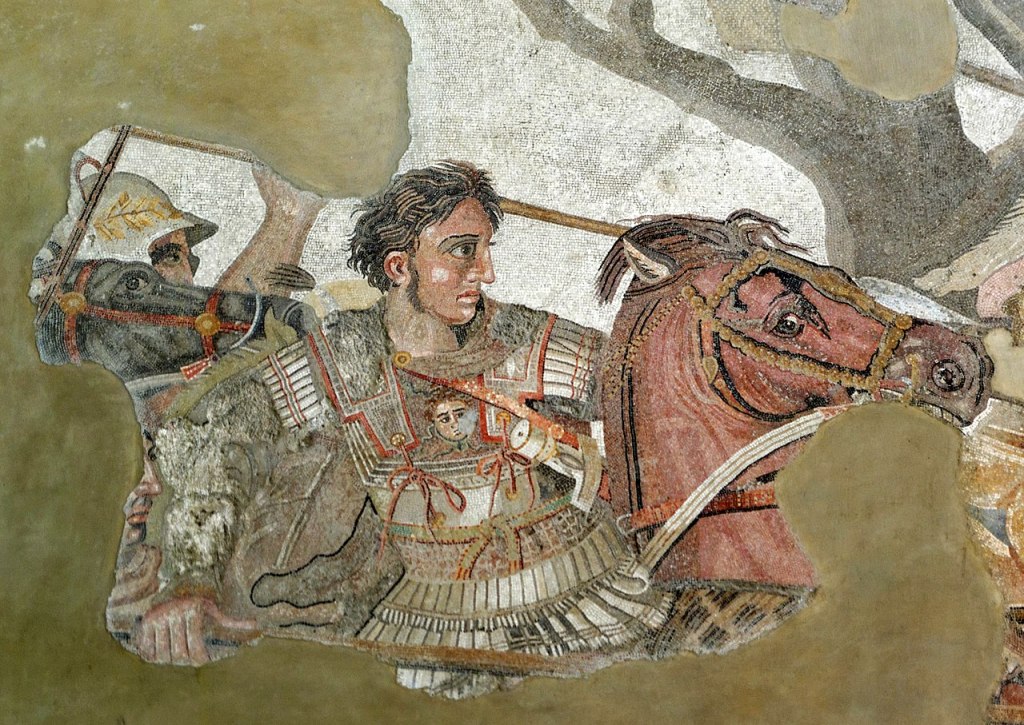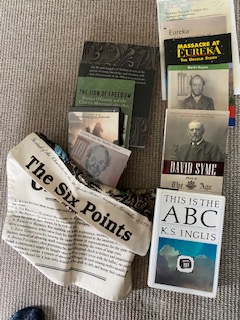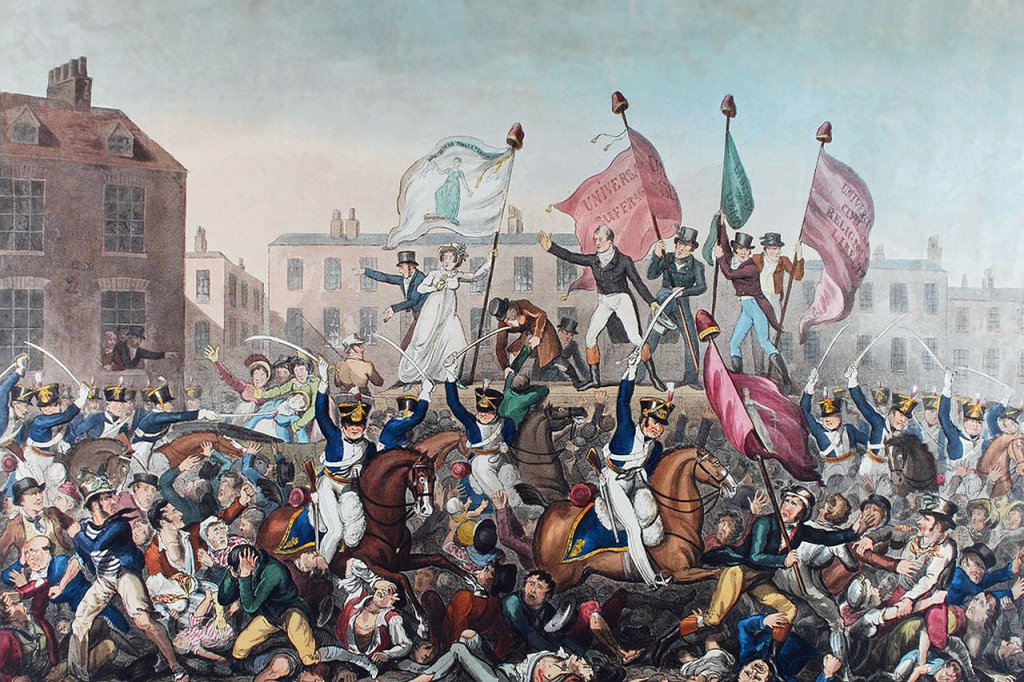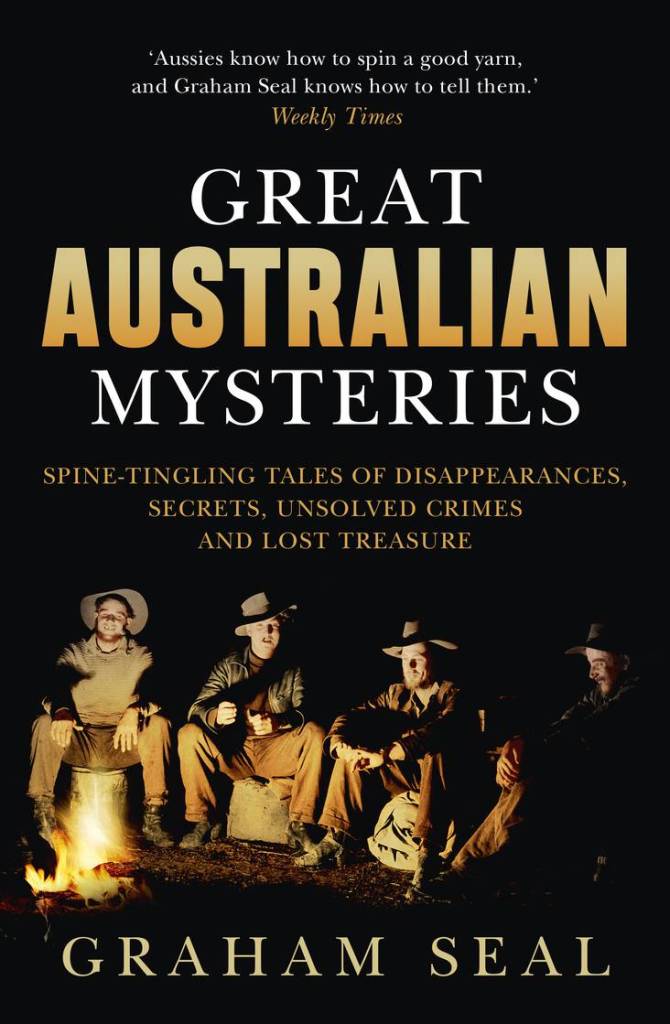
One historical figure has left a gigantic imprint in the traditional stories of many countries and cultures. Alexander the Great (356-323 BC) was a Macedonian king who conquered much of the known world, including the extensive Persian Empire, between 336 BC and his death at the age of only 33. Generally considered to be one of the finest military geniuses of all time, he appears in the folklore of many cultures, from Macedonia to India and in Christian, Jewish and Muslim traditions.[i] The range and variety of stories about Alexander has led at least one authority to claim Alexander is the greatest folk hero of all.[ii] In addition to his extensive folklore, and in recognition of his historical deeds, Alexander is also revered as a Macedonian culture and national hero.[iii]
First and foremost, though, is Alexander’s towering status as a warrior. Iranian tradition, for example, often recounts his brilliant, ruthless and sometimes bloodthirsty victories and accomplishments.[iv] Medieval Christian stories have Alexander fighting female cannibals, six-headed giants and other monsters in the best traditions of the giant-slayer. In both Jewish and Christian tradition, Alexander is said to have fought his way to the gates of paradise in a story that suggests the futility of human endeavours, even those of one so great as Alexander.
Marching through a dusty desert, Alexander and his men came upon a small river. The beauty of the river tempted Alexander to forgo the world of violence greed and treachery and to live by the river in peace. But he resists this temptation and marches on. Eventually he and his army stop to rest by the banks of the river and a fish is caught for the great man’s supper. So fine did the fish taste that Alexander concluded the river must flow from a rich country. He followed the river and came to the gates of paradise. Never modest, Alexander announced himself as the great conqueror and lord of all the earth and demanded to be allowed into Paradise.
But the gates remained locked and a voice from the other side said that this was the home of the just and the peaceful and that only those who had conquered their passions may enter. ‘Nations may have paid homage to thee, but thy soul is not worthy to be admitted within the gates of the abode of the just. Go thy ways, endeavour to cure thy soul, and learn more wisdom than thou hast done hitherto’, says an Israeli version of the tale.[v]
No matter how Alexander requests the right to enter he is refused. Eventually he asks for a gift to prove he has travelled to the gates of Paradise. The guardian of the gates then gives him a human skull, saying that it can teach Alexander more wisdom than he has acquired in all his conquests. The great warrior angrily throws the skull fragment down.
But then a learned man among his retinue suggests that the skull be weighed with gold. To Alexander’s surprise, the skull outweighs all the gold brought to the scales. He asks the man if there is anything that could outweigh his small fragment of skull from the gates of Paradise. ‘Yes’, says the learned man. ‘This fragment, great king, is the socket of a human eye which, though small in compass, is unbounded in desire. The more gold it has the more it craves for and is never satisfied. But once it is laid in the grave, there is an end to its lust and ambition’. The wise man then asked Alexander to have the eye socket covered in dirt. As soon as this was done, the gold outweighed the eye socket.
Great though his warrior powers might be, even Alexander is subject to human limitations and needs to become wiser. No hero, however exalted, wins everything, all the time, a theme echoed in other warrior traditions.
- [i] Cavendish, R. (ed.), Legends of the World, Orbis, London, 1982, pp. 106-107, 230-234, 283-284 for some examples. Alexander is even celebrated in countries he did not visit, notably Georgia, see Elene Gogiashvili, ‘Alexander of Macedon in Georgian Folktales’, Folklore Vol. 127, Iss. 2, 2016, pp. 196-209.
- [ii] Leach, M. (ed.), Funk & Wagnall’s Standard Dictionary of Folklore, Mythology and Legend. 2 vols., Funk & Wagnall, New York, 1972, vol. 1 pp. 34-5.
- [iii] Abbott, G., Macedonian Folklore, Cambridge University Press, Cambridge, 1903, pp. 279-289, Eberhard, W. (ed.), (trans. Parsons, D.), Folktales of China, University of Chicago Press, Chicago, 1965 (1937), pp. 91, 219, Ranelagh, E., The Past We Share: The Near Eastern Ancestry of Western Folk Literature, Quartet Books, London, 1979, pp. 45-80, Stoneman, R. (trans. and ed.), Legends of Alexander the Great, J.M. Dent, London, 1994.
- [iv] Christensen, A (ed.), Persian Folktales (trans. Kurti, A.), Bell & Sons, London, 1971,
- [v] Rappoport, A., Myth and Legend of Ancient Israel, 2 vols. Gresham Publishing Co., London, 1928, vol. 1 pp. 126-129.








